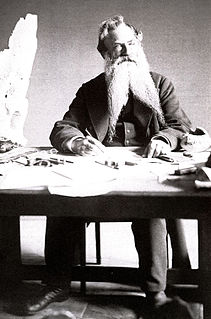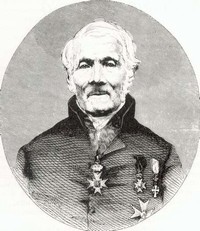 W
WLars Gabriel Andersson was a Swedish schoolteacher and herpetologist.
 W
WJakob Johan Adolf Appellöf was a Swedish marine zoologist.
 W
WPeter Artedi or Petrus Arctaedius was a Swedish naturalist who is known as the "father of ichthyology".
 W
WSten Bergman was a Swedish zoologist and adventurer who visited Korea, Kamchatka, Papua New Guinea, Japan and many other places.
 W
WCarl Alexander Clerck was a Swedish entomologist and arachnologist.
 W
WAnders Gustaf Dahlbom was a Swedish entomologist.
 W
WBaron Charles de Geer ; Finspång in Risinge 30 January 1720 – Stockholm 7 March 1778) was a Swedish industrialist and entomologist.
 W
WCarl Fredrik Fallén was a Swedish botanist and entomologist.
 W
WPeter Forsskål, sometimes spelled Pehr Forsskål, Peter Forskaol, Petrus Forskål or Pehr Forsskåhl was a Swedish-speaking Finnish explorer, orientalist, naturalist, and an apostle of Carl Linnaeus.
 W
WBengt Fredrik Fries was a Swedish zoologist. He studied at Lund University.
 W
WLeonard Gyllenhaal was a Swedish military officer and entomologist.
 W
WAnders Erik Vilhelm Jarvik was a Swedish paleontologist who worked extensively on the sarcopterygian fish Eusthenopteron. In a career that spanned some 60 years, Jarvik produced some of the most detailed anatomical work on this fish, making it arguably the best known fossil vertebrate.
 W
WAxel Klinckowström (1867–1936) was a Swedish baron, zoologist, Arctic and Antarctic explorer, fiction writer and memoirist. Among his works were the libretto Waldemarsskatten from 1898 and the play Olof Trätälja from 1908.
 W
WSven Oscar Kullander is a Swedish biologist specialised in ichthyology. He primarily researches cichlids – notably the genus Apistogramma and the Cichlasoma-complex – and other tropical fresh water fishes. He also has been working with endangered fish species in Sweden.
 W
WWilhelm Leche (1850–1927) was a Swedish zoologist who published works on mammals.
 W
WWilhelm Lilljeborg was a Swedish zoologist. He is particularly known for his work on the Cladocera of Sweden, and on the Balaenoptera. Lilljeborg was a member of the Royal Swedish Academy of Sciences from 1861.
 W
WAxel Johann Einar Lönnberg was a Swedish zoologist and conservationist. Lönnberg was born in Stockholm. He was head of the Vertebrate Department of the Naturhistoriska Riksmuseet from 1904 to 1933.
 W
WProf Sven Ludvig Lovén, was a Swedish marine zoologist and malacologist. The Sven Loven Centre for Marine Sciences within the University of Gothenburg was named in his honour.
 W
WRené Edmond Malaise was a Swedish entomologist, explorer and art collector who is mostly known for his invention of the Malaise trap and his systematic collection of thousands of insects.
 W
WAugust Wilhelm Malm was a Swedish zoologist, entomologist and malacologist. He was the first Director of the Gothenburg Natural History Museum.
 W
WEric Georg Mjöberg was a Swedish zoologist and ethnographer who led the first Swedish scientific expeditions to Australia in the early 1900s, and worked in Indonesia. The plant Vaccinium mjoebergii J.J.Sm. was named after him, as were Mjoberg's toadlet, the grasshopper Goniaea mjoebergi, the crab Uca mjoebergi, Mjöberg's forest dragon, the Atherton Tableland skink, Mjöberg's bush frog, and Mjöberg's dwarf litter frog.
 W
WSven Nilsson was a Swedish zoologist and archaeologist.
 W
WAxel Gabriel Ohlin was a Swedish zoologist and Arctic and Antarctic explorer.
 W
WGustav von Paykull was a Swedish friherre and Marshal of the Court, ornithologist and entomologist.
 W
WAnders Jahan Retzius was a Swedish chemist, botanist and entomologist.
 W
WOlof Rudbeck the Younger or Olaus Rudbeckius d.y. was a Swedish explorer, scientist, botanist, ornithologist and rector of Uppsala University.
 W
WTorbjörn Åkesson von Schantz is a Swedish professor of zoology and the current rector magnificus of Lund University. Between 2013 and 2014 he was pro-rector of the Swedish University of Agricultural Sciences, and he then became rector of Lund University.
 W
WBror Yngve Sjöstedt was a Swedish naturalist.
 W
WCarl Stål was a Swedish entomologist specialising in Hemiptera.
 W
WCarl Jakob Sundevall was a Swedish zoologist. Sundevall studied at Lund University, where he became a Ph.D. in 1823. After traveling to East Asia, he studied medicine, graduating as Doctor of Medicine in 1830.
 W
WJohan Hjalmar Théel was a Swedish zoologist and university professor.
 W
WTord Tamerlan Teodor Thorell was a Swedish arachnologist.
 W
WCarl Peter Thunberg, also known as Karl Peter von Thunberg, Carl Pehr Thunberg, or Carl Per Thunberg, was a Swedish naturalist and an apostle of Carl Linnaeus. He has been called "the father of South African botany", "pioneer of Occidental Medicine in Japan" and the "Japanese Linnaeus".
 W
WProf Otto Martin Torell HFRSE was a Swedish naturalist and geologist.
 W
WJohan August Wahlberg was a Swedish naturalist and explorer. Wahlberg started studying chemistry at the University of Uppsala in 1829, and later forestry, agronomy and natural science, graduating from the Swedish Forestry Institute in 1834. In 1832 he joined Professor Carl Henrik Boheman, a famous entomologist, on a collecting trip to Norway. In 1833 and 1834 he travelled in Sweden and Germany on forestry research projects. He joined the Office of Land Survey and was appointed an engineer in 1836, becoming an instructor at the Swedish Land Survey College.
 W
WJohan Wilhelm Zetterstedt was a Swedish naturalist who worked mainly on Diptera and Hymenoptera.